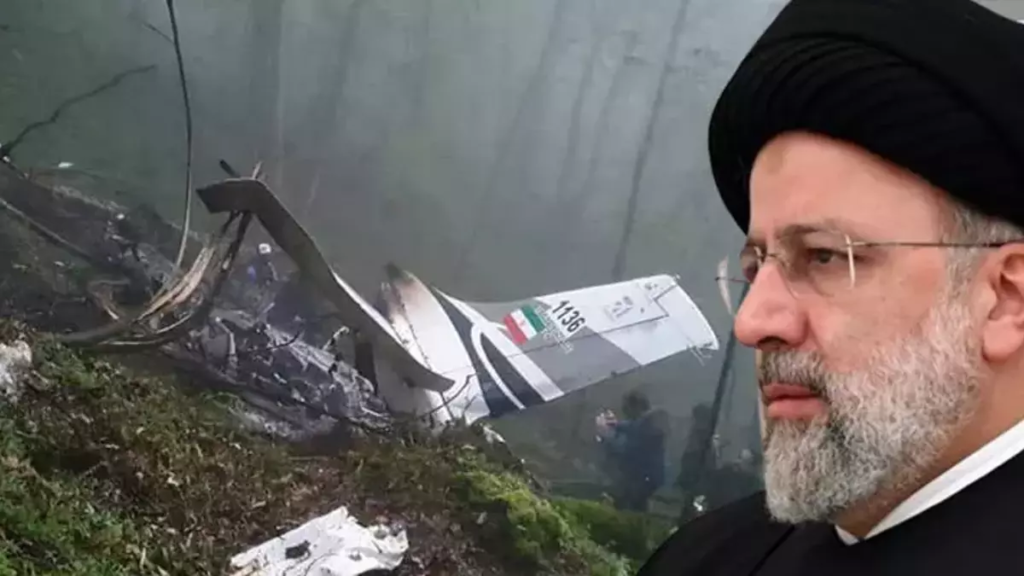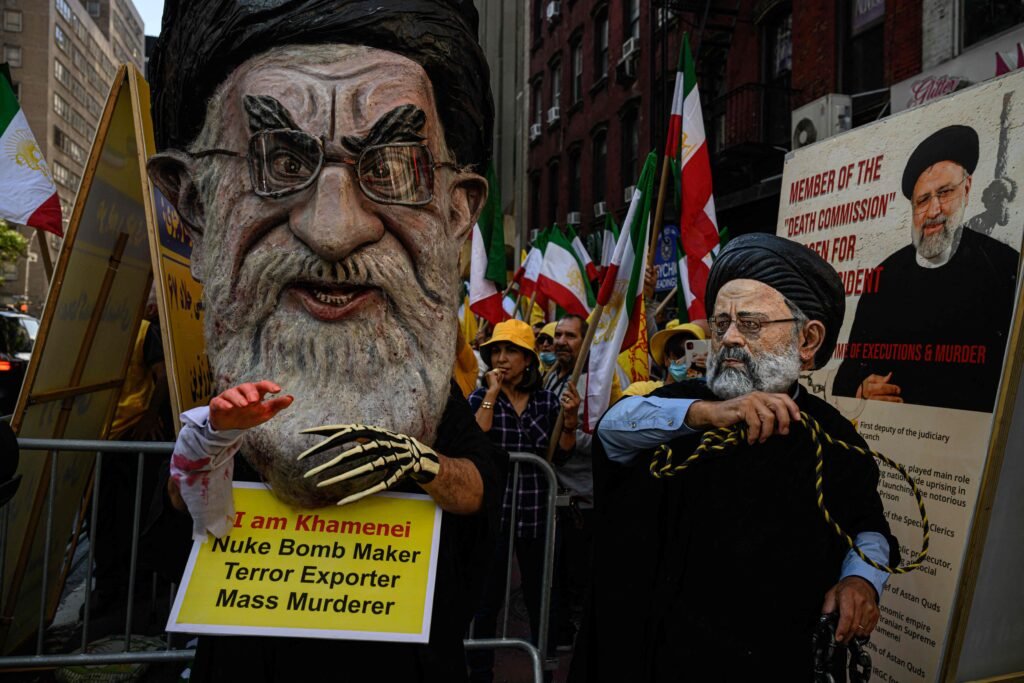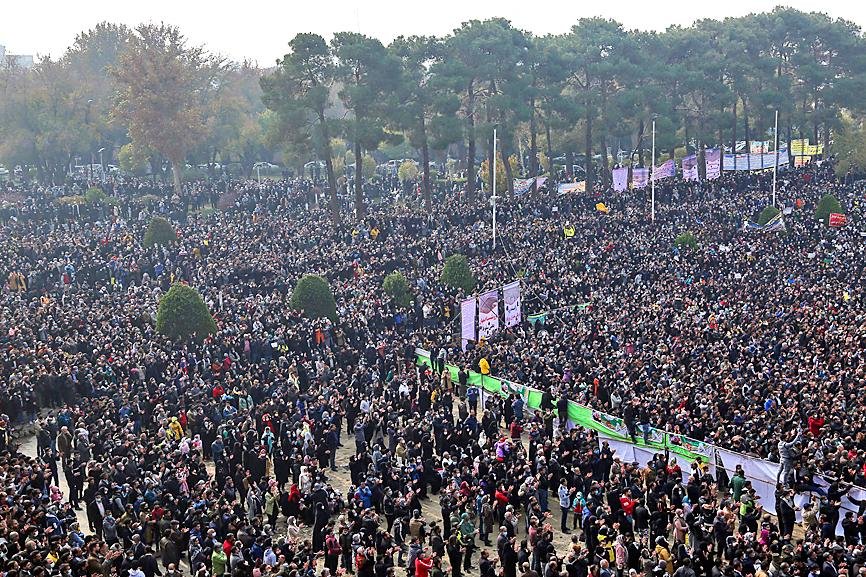
The death of President Ebrahim Raisi in a helicopter crash has triggered reactions across Iran and the global stage. While imperialist powers in the West celebrate the end of the so-called ‘Butcher of Tehran,’ millions of Iranians face continuing hardships under sanctions and oppression. However, the Iranian communists view Raisi’s death through a different lens: his legacy is one of ruthless counterrevolution, and many now hope that the Iranian people will finally bury the Islamic Republic alongside him.
Raisi’s death has intensified existing divides within Iran. In the aftermath of the accident, state funeral gatherings in major cities like Tehran, Tabriz, and Qom saw only limited turnout from staunch regime supporters, despite government attempts to cast the nation in mourning.
During the initial hours of uncertainty following the helicopter crash, spontaneous celebrations erupted across the country, with fireworks lighting up the skies, signaling the joy of Iranians who long for an end to the repression that Raisi symbolized.
Celebration and Defiance Amidst State Repression
The outpouring of quiet jubilation following Raisi’s death highlights the resentment simmering among Iran’s youth and working class. For years, Raisi and the ruling establishment executed dissidents, imprisoned thousands — primarily youth and labor activists — and violently crushed protests, most notably the 2022 Woman-Life-Freedom uprising sparked by the tragic death of Mahsa Amini.
Despite persistent crackdowns, activists and students from major cities including Tehran, Kurdistan, Isfahan, and Shiraz defied state-imposed silence. These revolutionary groups issued a united statement: “Our joy is boundless — not simply because a tyrant is dead, but because it’s a reminder of our resilience and the fight for justice.” This defiance echoes the voices of countless Iranian families grieving loved ones lost to state brutality, as well as the Coordinating Council of Iranian Teachers’ Trade Associations, which called out Raisi’s crimes, from mass executions in the 1980s to recent atrocities within the education system.
A Reactionary System’s Desperation
Raisi was just one piece in the larger oppressive machinery of the Islamic Republic, which was built on the graves of those who overthrew the Shah in 1979 only to see their revolution co-opted. Since 2018, Iran has witnessed near-constant waves of strikes and protests, with Raisi’s presidency emerging from a manipulated 2021 election in which viable candidates were disqualified. His rule brought temporary cohesion within the regime, but it failed to inspire the public, who increasingly view the entire ruling class as corrupt and self-serving.
Economic hardship has further deepened the social divide. The state’s recent handling of sanctions has enriched Iran’s elite, while millions of Iranians suffer. Despite some recovery due to increased oil exports to China and other allies, the regime has shifted the economic burden onto the working class.

With over 40% of Iranians living below the poverty line, economic insecurity has fueled public resentment, leading to more intense and frequent labor strikes.
A Regime Out of Touch and Losing Support
While the regime claims stability, underlying crises have only intensified. The government’s repressive response to the 2022 protests revealed its vulnerability. Iran’s parliament recently recorded the lowest voter turnout in the history of the Islamic Republic, with unofficial estimates suggesting a participation rate as low as 27%. A leaked government report further confirmed a shift in public opinion, showing that a majority of Iranians now support secularism and have grown disillusioned with religious mandates. The erosion of religious piety and the public’s declining trust in the regime’s institutions underscore a society moving away from the Islamic Republic’s ideology.
This growing dissent has led to open panic among Iran’s ruling elite. Members of parliament and other officials are increasingly vocal about their fears of a potential revolution. Raisi’s departure has removed a stabilizing figure within the regime, and with upcoming presidential elections scheduled for June, the regime is bracing itself for a new wave of public unrest.
Toward a Revolutionary Future
Iran’s working class and youth are gearing up for a renewed struggle. While the regime has managed to suppress past uprisings, the underlying conditions fueling discontent remain. The social and economic crises are deepening, and inflation is rampant. Iran’s workers, who face stagnant wages and soaring costs, have continued to organize strikes, seeking economic justice and better living standards.
For the Iranian communists, a revolution is the only solution. They advocate for a new system rooted in the demands of the masses: living wages adjusted for inflation, significant public investment in infrastructure, renationalization of key industries, and democratic freedoms, including the right to strike and assemble. These demands challenge the foundation of the Islamic Republic and highlight the need for systemic change that goes beyond replacing one figure with another.
A People’s Movement Against Both Tyranny and Imperialism
While Raisi’s death is a symbolic blow to the regime, Iranian communists reject aligning with Western-backed liberal opposition groups. These factions, championed by former monarchists and supported by foreign powers, offer no real alternative to the current system. Both the Islamic Republic and the exiled monarchists operate within the same capitalist framework, aiming to preserve the status quo and safeguard the interests of foreign capital. True liberation, communists argue, can only come from within — by and for the Iranian people, not through foreign intervention.
The path forward requires a strong revolutionary organization, one capable of uniting the diverse factions of Iran’s working class and channeling their grievances into a coherent movement.

For Iran’s communists, the task is clear: prepare for the revolutionary struggle to dismantle both the Islamic Republic and the capitalist structures that underpin it. Only through organized action can the Iranian masses hope to create a society that prioritizes justice, equality, and freedom for all.

